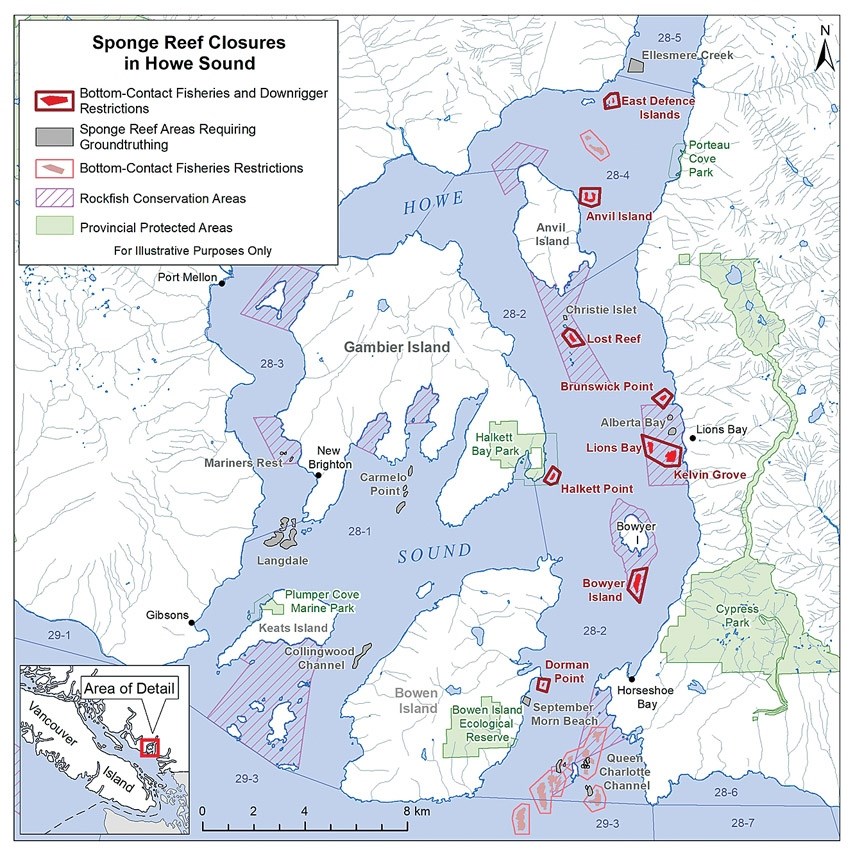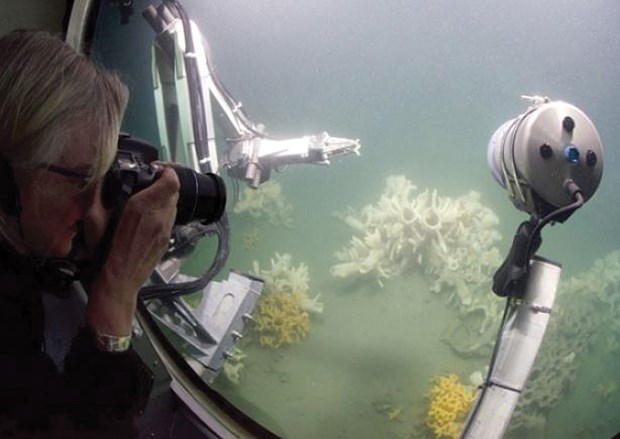Conservationists are calling for greater protection of some endangered but important glass sponge reefs on the floor of Howe Sound after new scientific research shows the existing rules may not be adequate.
In March, North Vancouver MP and then-Fisheries and Oceans Minister Jonathan Wilkinson announced eight new marine protected areas in Howe Sound banning prawn and crab traps, groundfish trawls and lines, and the use of downrigger gear by commercial, recreational and Indigenous fishers within 150 metres of the reefs below.
But research published just a month later found those buffers may not be wide enough.
Researchers studying sponges in the Hecate Strait sent submersible robots down to the reefs to observe how they responded to sediment.
“They found out that just a little bit of sediment actually stops the sponges from feeding for six to 12 hours. If that continues for long enough, that could lead to health problems and even death,” said Carlo Acuna, ocean campaigner, for the Canadian Parks and Wilderness Society.“This is a problem because sediment is kicked up by any fishing activities or any human activities that impact the bottom of the seabed.”
Although Acuna conceded the conditions may be different in Howe Sound, the Hecate Strait study found that fishing as far as three to six kilometres away can send sediment drifting into the sponges’ habitat.
Glass sponges were thought to have gone extinct more than 37 million years ago but small pockets of them were discovered in various places off the B.C. coast in the 1980s. Because they date back in the fossil record more than 200 million years, they are sometimes referred to as living dinosaurs.
They play a critical role in the ecosystem, filtering more than 17 billion litres of water per day – an Olympic-sized swimming pool in less than 60 seconds – processing bacteria, carbon and nitrogen. They also provide habitat for 84 species of fish and invertebrates including prawns and rockfish. But, as their names suggests, they are incredibly fragile.

CPAWS is hoping the next minister in charge of Fisheries and Oceans Canada will expand the marine protected areas to create 500-metre buffers, subject to consultation with First Nations and industry, Acuna said.
“Having these glass sponge reefs around it will actually increase the amount of fish that are available for fishermen,” he said.
But, while the Pacific Prawn Fishermen’s Association were supportive of the original marine protected areas, they say the proposed changes would go too far.
“[We feel] the commercial fishery can continue to operate successfully under current management regimes. Today’s fishermen are environmentally responsible, recognize the importance of protecting ecologically sensitive habitats, such as glass sponge reefs, and support and participate in scientific surveys and research,” said Mike Atkins, the group’s executive director.
According to CPAWS there are at least nine other reefs in Howe Sound that have been discovered but not officially surveyed by DFO and therefore haven’t been granted any protection.
In response to CPAWS’ request, Fisheries and Oceans Canada sent a statement.
“We are carefully reviewing CPAWS recommendations and are committed to meaningful conservation of Canada’s marine environment, including unique and fragile features like glass sponge reefs,” the statement read. “We continue to gather data and information to support the management of the marine protected area] and will consider new research on specific risks to the glass sponges.”



